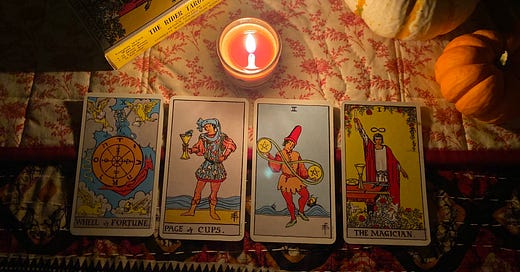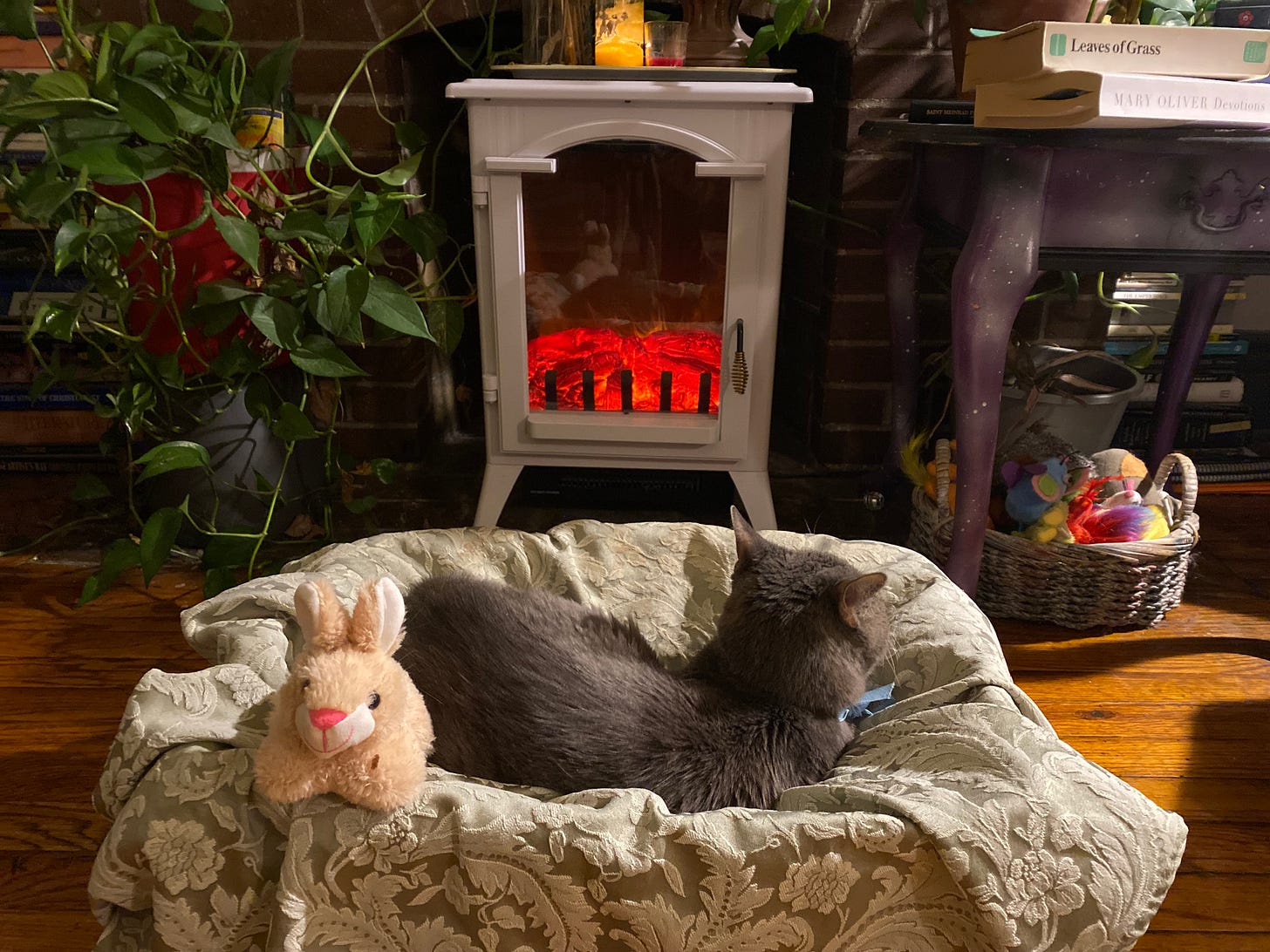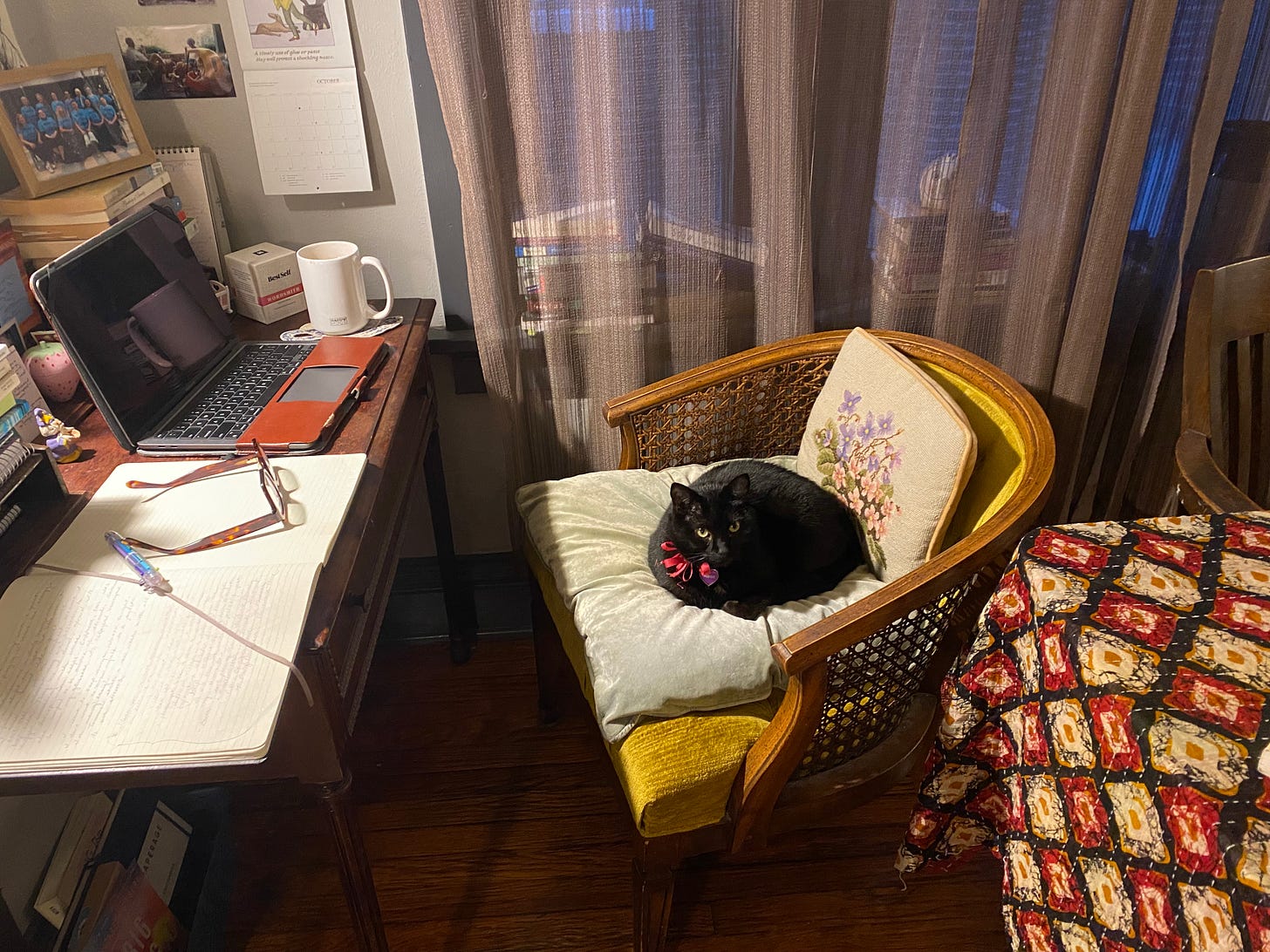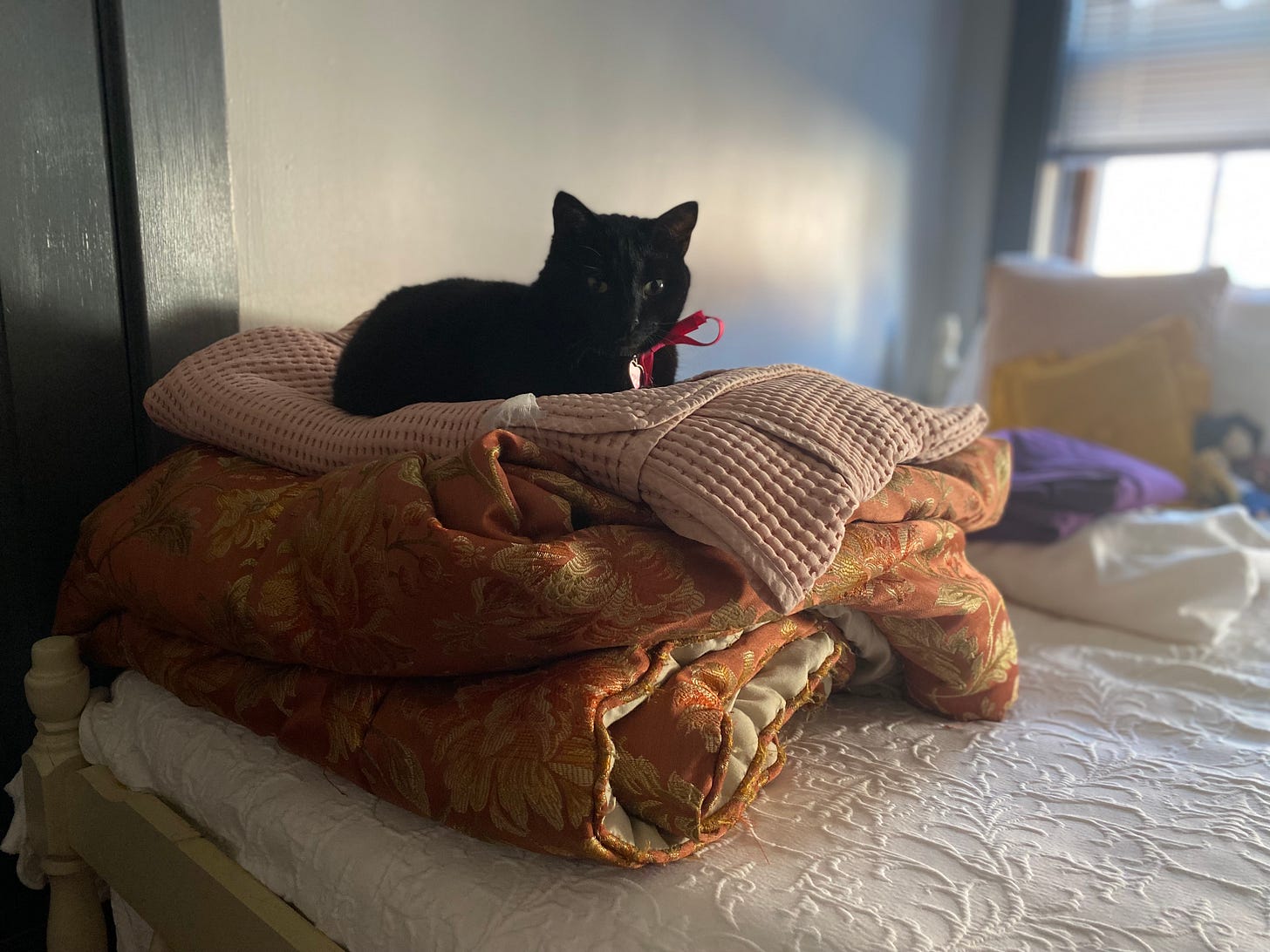My Emily Dickinson Autumn continues...
Here is a Letter from the Homestead for October. 🎃 Inside: chronic headaches (ick), trying to write a screenplay as a playwright, what I've been reading, etc.
Emily Dickinson called her Amherst home “The Homestead.” I lovingly call my apartment in St. Louis the same thing (though I definitely get out more than Dickinson). This monthly newsletter is my attempt to work through what it feels like to put down roots as a writer in my own Homestead.
Hello, headaches.
I did not expect my Emily Dickinson Autumn to include any physical ailments (Dickinson suffered from Bright’s Disease at the end of her life, an illness that only caused her to seclude herself more as she declined), but my fall months have been dotted with a new frustration: chronic headaches. They started about two months ago, unpredictable and exhausting. Triggered by the season change? Other body changes? Allergies? Age? Who knows.
Every day now, I worry over getting headache. Usually, my anxieties are realized, but a day without a headache (rare now) is a grace. The back of my head (a migraine indicator) or the swatches of skin over my eyebrows (tension or sinuses) are tender clocks, ticking quietly until their batteries die. Then, they scream.
I’m a generally healthy person. Imperfectly healthy, for sure, but I’ve never been prone to these kinds of daily complaints. Though it’s only been a few months, I’m shocked at how the threat of a daily bad headache has realigned my life. I check in with myself so much more often during the day, pushing myself to pay closer attention than usual—am I tired? hungry? have I been drinking water? am I taking full breaths of air or just little sips?
I cannot remember the last time I was this tender with myself.
Still, there is no romanticizing a health issue that seems to be worrisomely chronic. I know that some readers are sufferers of chronic issues like this, recurring pains that don’t have much of an explanation. If anything, this new reality with my body makes me better understand how frustrating this is. My bloodwork is fine and normal. My lifestyle is a little sedentary but probably not to the point of harming myself. I don’t drink. I smoke maybe one or two cigarettes a year. I have one of those giant water bottles I carry around. If all of this is just aging and hormones, then this is just my introduction to the club.
Pain is strange. Pain amidst general health is also strange.
I don’t have any solutions to offer here, nor do I have thoughts on fixing my attitude toward this new thing. I just wanted to record it here for my own memory. Maybe, a year from now, the headaches will be gone. Or maybe they won’t.
🤕 My favorite headache remedies/soothers so far: Flexible cold compress; neck cooler (great for the start of a migraine-like headache); peppermint inhaler; roll-on pain reliever; Liquid I.V. (pricey, but these have helped me); nasal irrigator for sinus pressure (my Dad got this for me and it’s a lifesaver—thanks, Dad!); Eucalyptus + Spearmint Dr. Teal’s. And, of course, Excedrin Migraine Relief. This is the only medicine that knocks out a bad headache quickly, but the downside is that it’s got some caffeine in it—hard to take at night, for sure.
A playwright attempts to write a screenplay
When I signed with a literary agent last year, I had a meeting with the agency’s film rights rep to talk about what goes into turning a book into a screenplay. Granted, my book does not have a deal (yet—please light a candle for me), but it was fun to imagine what it would be like to transform that story into a screenplay. Hell, it was the compliment of a lifetime to know that someone wanted to see my novel as a film.
Before I even begin to tackle that massive task, I wanted to challenge myself to revise one of my shelved scripts (i.e., one that just doesn’t seem to have the momentum for a production) into a screenplay. Maybe trying on a new medium (film! the new frontier!) would help me see it with new eyes? Maybe it was meant to be a film all along?
Maybe the exercise alone is worthwhile? (It usually is.)
From that meeting with the film rights agent and from my own piddling with this process, here are a few things I’ve learned.
A play thrives on poetic faith, but a screenplay fills in the blanks. In playwriting, you’re encouraged to think in impossibilities. Poetic faith is on your side; you can trust that the audience will suspend their disbelief simply because they are attending a play. A screenplay, though, requires you to actively describe everything we see and hear. When I’m teaching playwriting, I usually encourage writers to cut more than half their stage directions/descriptions. But that’s the bread and butter in screenwriting, it seems.
A first screenplay loves a slim character list. The play I’m revising into a screenplay has three characters, tightly contained for the constraints of an “indie feature.” (I learned that phrase from the film rights rep! Love new vocab!) One of the first things the film rep asked me when we talked about my book was how many characters. In a novel, you can populate your world with little inhibition, but a screenplay functions from a place of resource limitations, much more so than play production. Fewer characters equals a stronger chance that someone will want to invest in your screenplay.
Each page of a screenplay can cost about $5000 to make. When I learned this ballpark number, I was shocked. This guidance is making me think about the value of every single page of my 90-page screenplay.
I’m confronting my own distrust of the medium, which is probably just insecurity. What I love about the theatre is its extemporaneousness. I love the ritual of live performance. I love the suspension of disbelief. I love how, when I go see a play, I can focus my energy on connecting with the actors while they work so courageously in front of me, sweat and all. Film feels so much more detached to me, which makes me distrust it. It’s hard to hide in the theatre. By making myself sit down and create a screenplay, I’m pushing myself to experiment with a medium outside my comfort zone, one that feels scary and a little “out of my league.”
The formatting is actually super charming. I downloaded a “Screenplay Formatter” extension in Google Docs. Using this extension alone has been the best crash course in how to format a screenplay. I’m actually really charmed by how the dialogue is tightly contained in the page’s center. As much as I hate to admit it, it’s more readable, more focused.
What I’m Reading this Month
Abortion by Jessica Valenti. This has been a great primer on the current landscape of the abortion rights struggle. A great read if you’re looking to inform yourself on the nitty gritty of legislation. (For instance, did you know that the term “fetal viability” is a term medical practitioners don’t believe in? It’s basically impossible to determine. The term “fetal viability” was created by a law clerk!)
Of Woman Born: Motherhood as Experience and Institution by Adrienne Rich. An excellent anthology of Rich’s writing. I’ve been listening to this in audiobook form.
The Passion of Emily Dickinson by Judith Farr. A critical treatment of Dickinson’s work and life. Reading this as research for my Dickinson slumber party play.
The Universe in Verse by Maria Popova. A gorgeous, meditative book on the intersections between science and poetry.
I continue to make awfully slow progress through The Divine Comedy and Middlemarch. When I was in grad school, I read books like this at a lightning-fast speed. No more.
How I made money this month $$$
I believe freelance artists should be more upfront about how they support themselves financially, rather than maintaining the illusion they are fully supported by their art (they usually aren’t). This is me attempting to live out that principle. So, here are all the ways I brought in money to the Homestead for the month of October.
Teaching artist work for Prison Performing Arts. Teaching a weekly writing workshop on Zoom and teaching Spoken Word regularly inside a men’s prison.
Play commission fee. Playwriting fee for Little Women Town, a new play for the women’s prison that will be performed next year.
Volunteer stipend for a queer support helpline. I make a small bit of money each month by working shifts on the St. Louis Queer Support Helpline.
Paid Substack subscriptions. Thank you to all of my paid subscribers. It means the world to me you make a financial contribution to my work.
The Veil is Thin
The veil between the living and the dead is thin! 🎃 I hope your Halloween is peaceful—with just the right amount of reverent spookiness.
Please, please, please remember to vote. 🗳
Tonight starts a new month.
Yours,
Courtney, Mistress of the Homestead (and Noble Midge and Old Linus 🐈⬛ 🐈 )











